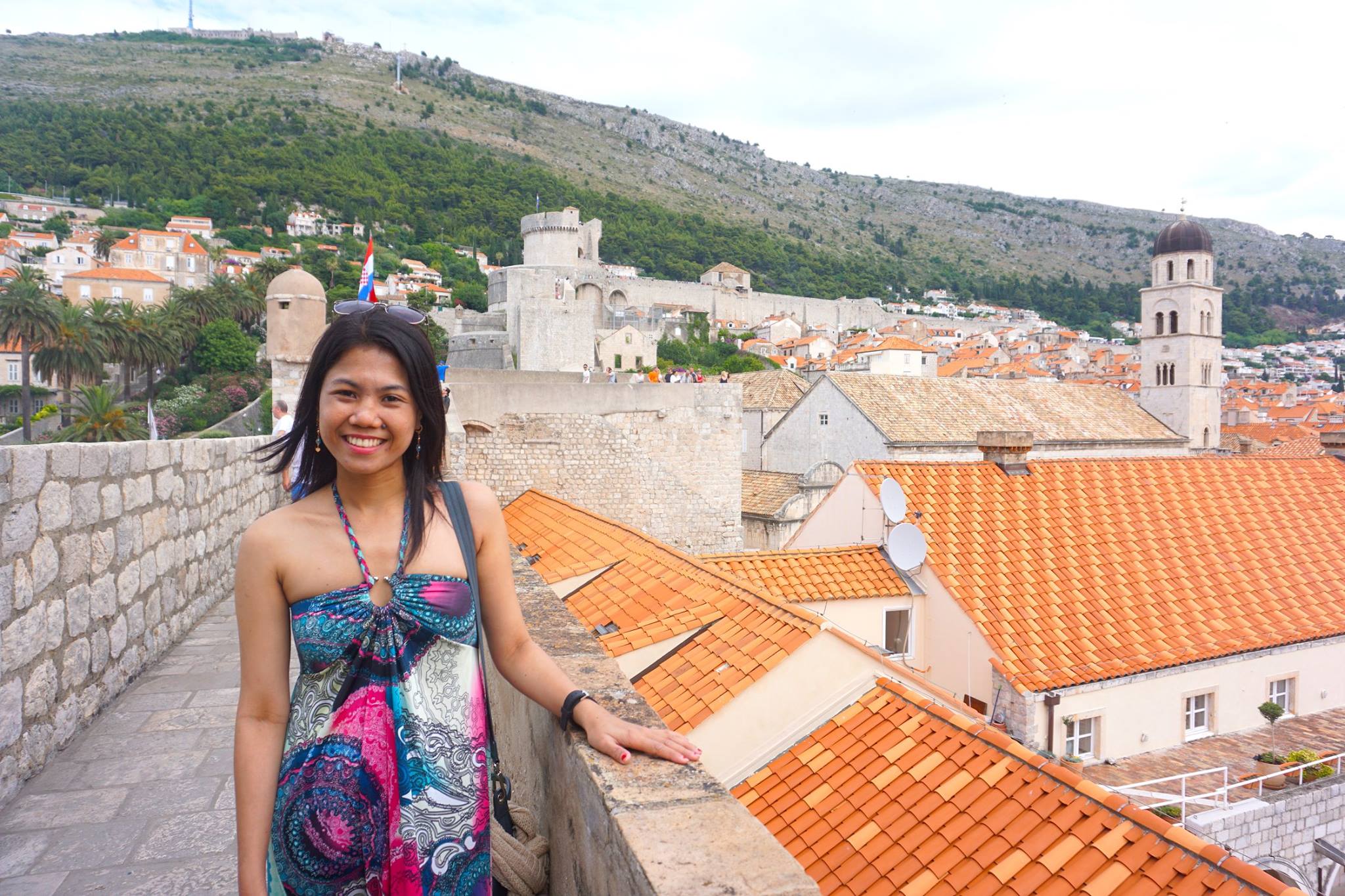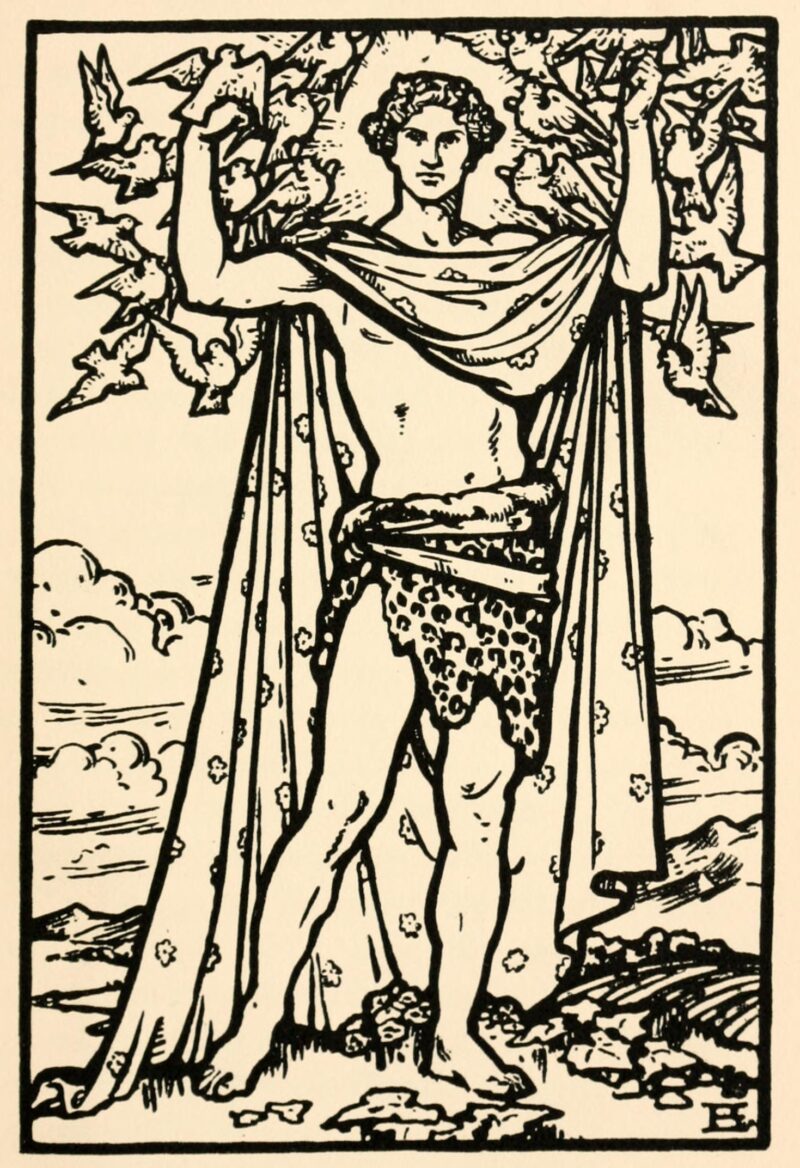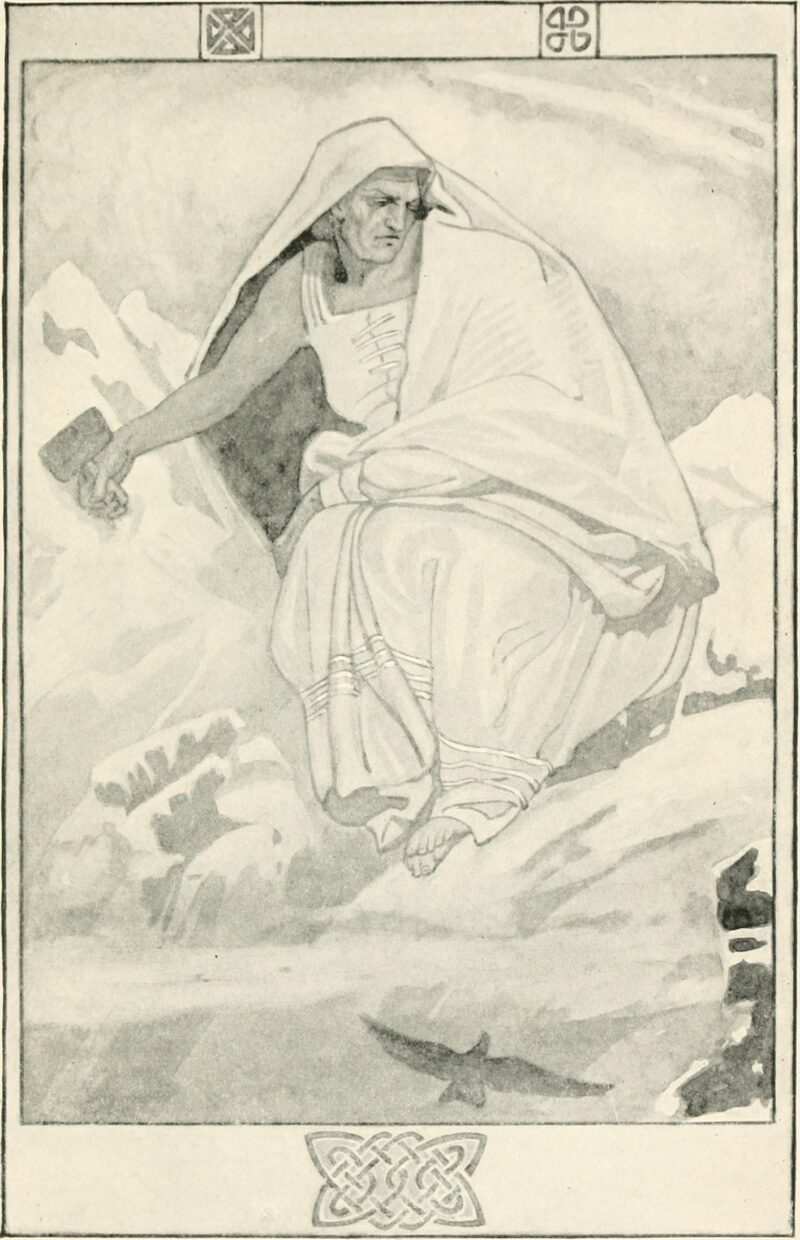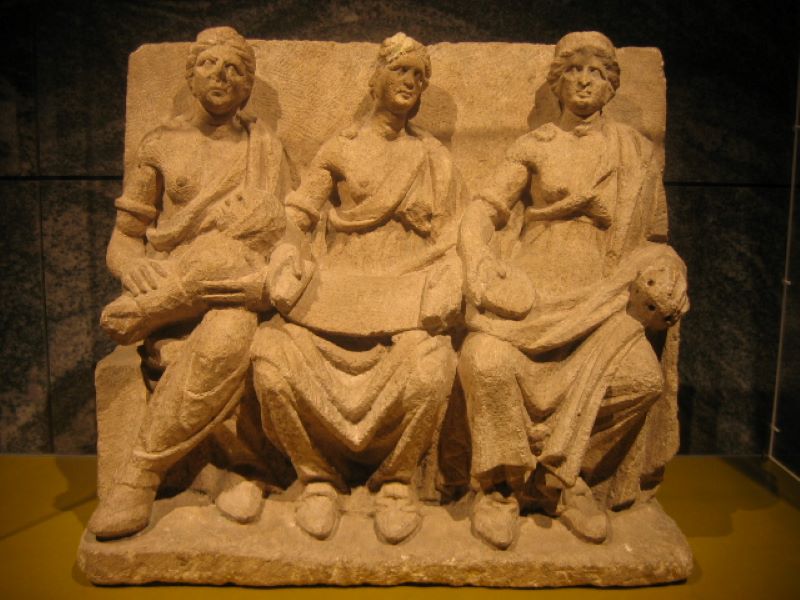In this list, we have some of the many Irish and Celtic gods and goddesses found in folklore. The gods and goddesses represented various facets of existence.
Things you'll find in this article
14 Irish Celtic Gods And Goddesses

Related Read:
1. Aengus
Aonghus, also called Angus, Aengus, and Oengus of the Bruig, is the deity of love and youth. The Boyne River valley is where he is said to reaide.
Legend says he looked all over Ireland for a lovely young woman. Aonghus tracked out Caer, who was among the group of 150 young women who would all be transformed into swans on Samhain Day, November 1. To reunite with Caer, Aonghus took the guise of a swan and flew back to his palace on the River Boyne, which is now known as Newgrange.
2. Aine
Aine is a Celtic goddess also known as the Faery Queen. In her dual roles as summer goddess and goddess of riches, Aine personifies the land’s bountiful harvest.
The survival of the people and their livestock depended on a prosperous harvest, hence the worship of fertility deities like Aine was highly valued.
The goddess Aine has long been linked to the summer solstice and the midsummer celebration. She, like the Morrigan, is associated with the red mare because of its reputation for speed and because of the belief that she may change form.
3. Balor
Irish Celts thought that Balor, the Celtic deity of chaos, was at the head of a demonic race called the Formorians. He is sometimes shown with either one eye or three eyes that, like the Greek Cyclops, unleash a wave of destruction when opened. To prevent unintended destruction, he must constantly hide his third eye with one of seven different objects.
Balor may be the inspiration for the expression “eyes in the back of your head,” as he, too, can see what’s happening behind him. The concept of the eye of Sauron in J.R.R. Tolkien most likely came from the iconography of Balor.
4. Brigit
Brigid, the daughter of The Dagda, is a member of the Tuatha Dé Danann and is linked to the arts of medicine, fire, wisdom, blacksmithing, livestock and poetry, making her a counterpoint to the more menacing Morrigan.
However, she might have been a triple divinity like Morrgan, revered for her curative, poetic, and smithing abilities.
Brigid, whose name means “Exalted One,” is traditionally celebrated on February 1 as part of the Gaelic springtime festival Imbolc. Some historians have contended that St. Brigid, one of Ireland’s patron saints, is only a Christianized version of the goddess Brighid.
5. Cailleach
Cailleach, the Celtic goddess of winter, is one of the lesser-known deities of the Celtic pantheon. She has a veil over her face, giving her the appearance of an old woman, according to reports.
She would hop and walk crookedly across the landscapes of Ireland and Scotland, altering the form of rocks and reshaping the environment as she went.
She was a neutral force, neither good nor bad in and of herself. Cailleach spent the winter looking after the animals, and her favorite was the wolf pack. It was said that she herded deer in Scotland.
She was a dangerous figure because of the winter season and the storms it brought. Since she was responsible for shaping the natural world, she was also a potential source of inspiration.
6. Cernunnos
With his characteristic antlers, worshippers of this Celtic deity also referred to him as the Horned God. The ancient Gauls revered him because he had godlike qualities.
The stag, the bull, the dog, and the horned serpent were all symbols of his power. Cernunnos was worshiped as the patron deity of woodland creatures.
In addition to being the protector god, he was revered as the god of hunting as long as people did not take more than they needed.
Cernunnos, one of the many Celtic gods, stands out as one of the more peculiar deities due to his seemingly non-human appearance. This could be because he existed before the time of the Gaelic-speaking Irish pantheon and Celtic mythology.
He occasionally had characteristics with the Roman deity Dis Pater.
7. Cliodhna
If Aengus is the god of love, then Cliodhna must be his female counterpart. She is surrounded by multicolored birds that frequent a tree straight out of the Imaginary Realm.
Instead of bringing about the end of humanity, Cliodhna utilizes the fruit that Eve ate to treat those who are sick and starving.
Legend has it thatyhe lord of Blarney Castle prayed to Cliodhna, and the tale of kissing the Blarney Stone in Ireland spread. She advised him, “Kiss the Blarney Stone, and you’ll be able to tell fibs like a pro.” The three birds represent her in Celtic mythology.
8. Deae Matres/Mother Goddess
The Latin name for the Mother Goddesses is the Deae Matres. Celtic suffixes, however, are also present in inscriptions, possibly serving to distinguish between different groups practicing the same religion. From Britain to northern Italy, the Mother Goddesses were revered by Celts everywhere.
They are most commonly linked to conception and birthing, but they are also associated with running water and organic sources of water.
It was believed that the Mother Goddesses could shield expecting mothers and their babies from harm.
9. Dagda
It is said that the Dagda, whose name means “The Good God,” presided over all of the Celtic deities. He is shown as a huge, bearded man who always has a club in his hand.
The Dagda, the most powerful god in Celtic mythology, is often compared to the Norse god Odin.
The Dagda, the Irish equivalent of Zeus, is the supreme god of the Celts and the father of many deities with widespread worship and renown. His primary symbols of knowledge, power, and plenty are the club and cauldron.
The Dagda, like the other gods of Celtic mythology, is claimed to be a member of the Tuatha dé Danann, a race of superhuman creatures.
10. Danu
Danu, the goddess who endowed the Tuatha de Danann with extraordinary skills, is a relatively minor character in Irish mythology and tradition. Although this facet of her reputation is rarely highlighted, she is also a warrior goddess.
Danu probably wasn’t the biological mother of the Celtic deities. Since she provided them with safety in the Otherworld throughout their exile and led them back to their own Ireland, the term “mother” is used symbolically.
According to mythology, Danu was one of the first and oldest deities to exist. She was the goddess of the natural world, and she always took the shape of a stunning lady.
In ancient Ireland, she represented the calming, spiritual side of nature. She was also connected to springs and motherhood.
11. Eire
Eire is the goddess after whom Ireland is named. She is one of the three sisters of the Tuatha Dé Danann, and played a significant role in the legacy of her people after the Milesian defeat.
As the victorious Milesians arrived, Eire and her sisters warmly welcomed them, symbolizing the peaceful transition of power and the resilience of the Tuatha Dé Danann.
It’s a fascinating piece of history that highlights the importance of diplomacy and respect in times of conflict. The offer on the table was to bestow upon her the honor of having a nation named after her.
Because of her status as the goddess of Ireland, Ériu is frequently seen as a modern-day personification of Ireland.
12. Lugh
The Irish war deity Lugh is revered as the patron of Celtic sports. Riding into battle on a white steed, he is accompanied by his hound Failinis and a burning sphere.
He is a legendary monarch and man who is often associated with the sports of chess and fishing.
In vengeance for the killing of Cermait, the Dagda’s grandsons decide to take him out. The Romans regarded Lugh as “the inventor of all art” because of his innovative spirit.
In popular culture, Lugh is seen less as a god and more as a demigod/folk hero. Lugh has storm power like Thor, and he slew Balor, the evil god of chaos like Loki killed Baldr.
Craftsman and mythical figure Lugh is credited with founding the Irish Olympic Games.
13. The Morrigan
Celtic mythology also features several fascinating beliefs, such as the trinity of goddesses like the Morrigan.
The goddess can be referred to either as Morrigan, an individual entity endowed with all of her abilities, or as The Morrigan, a triple goddess, or the three sisters who comprise the total.
There are many different names for these sisters: Morrigan, Medb, Badb, Macha, Eriu, and Fodla are just given that each of these goddesses rules over her sphere of influence, this can lead to some serious problems.
Maybe there’s just one goddess, and these are all her guises. Maybe the split occurred when later Celtic myths were being written or when Christians were trying to put together a pantheistic faith.
In any case, this entity ranks high among the most potent forces in Celtic mythology.
14. Taranis
Tanarus, or Taranis, was the Celtic sky and thunder god. His prominence as a Celtic god is shown by the widespread presence of artifacts associated with his cult across Europe, particularly in Britain, northern France, and Germany.
In his poem Pharsalia, the Roman poet Lucan also mentions him. Modern historians are divided on whether or not the Celts truly performed human sacrifices to Taranis, as claimed by Lucan.
Since the wheel is so closely associated with Taranis, it’s possible that he was also a sun god. This heavenly emblem represented the yearly cycle and its seasonal transitions.
Taranis is often shown with strong resemblances to the Roman god Jupiter because of his associations and significance in Celtic religion.

Hi, I’m Christine – a full-time traveler and career woman. Although I’m from the Philippines, my location independent career took me to over 60 countries for the past 12 years. I also lived in 4 continents – from the Caribbean, South East Asia, Africa and now in Europe. But despite living in several countries, my love for Ireland remains the same. A country that had been a part of my life since I was 14 because of my love for Irish music and bands. Ireland Travel Guides was born because of this passion and hopefully, in some little ways, this website will be able to help you on your next trip to Ireland.



